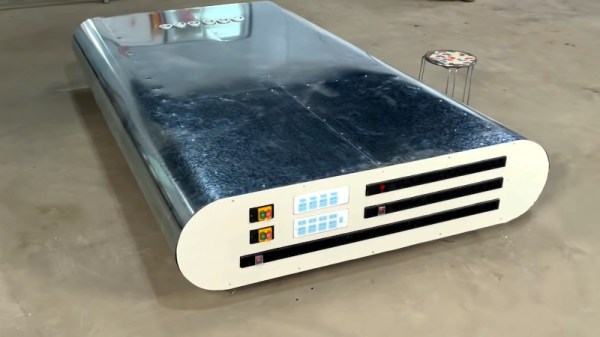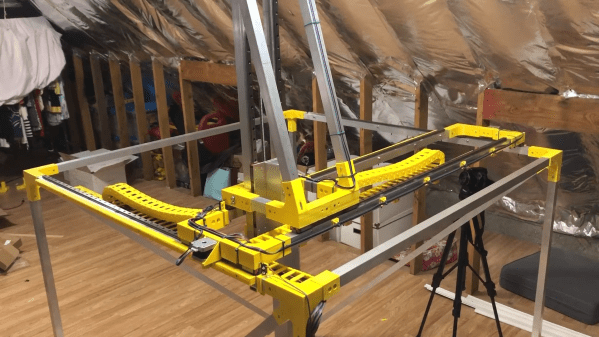Perhaps one day in the future when our portable electronics are powered by inexhaustible dilithium crystals, we’ll look back fondly on the 2020s when we carried around power banks to revive our flagging tech. Oh how we laughed as we reached for those handy plastic bricks only to find them drained already of juice, we’ll say. [Handy Geng] won’t be joining us though, because he’s made the ultimate power bank, a 27,000 AH leviathan that uses an electric car battery for storage and supplies mains power through a brace of sockets on its end.
The vehicle battery is mounted on a wheeled trolley along with what appears to be either the in-car charging unit or a mains inverter. The whole thing is styled to look like a huge version of a pocket power bank, with a curved sheet metal shell and white hardboard end panels. The demonstration pushes the comedy further, as after charging a huge pile of phones he replenishes an electric scooter before settling sown by a chilly-looking river for a spot of fishing — along with his washing machine, TV, and electric hotpot for a spot of cooking. We appreciate the joke, and as we know him of old we’re looking forward to more.
Continue reading “Supersized Power Bank Built From An EV Battery”














